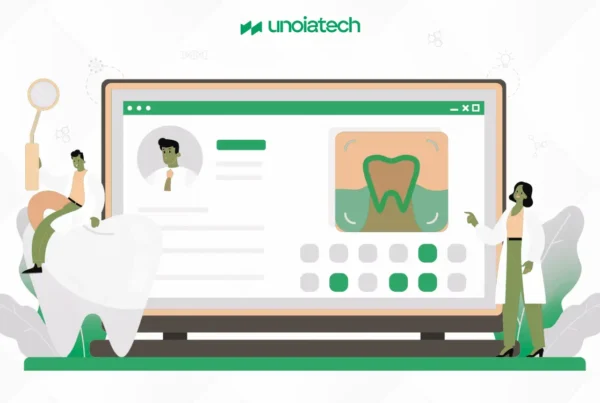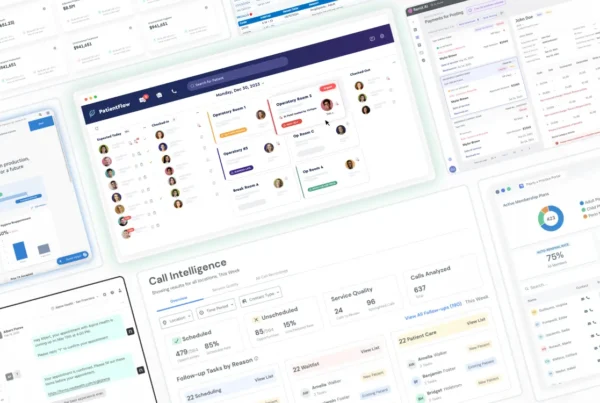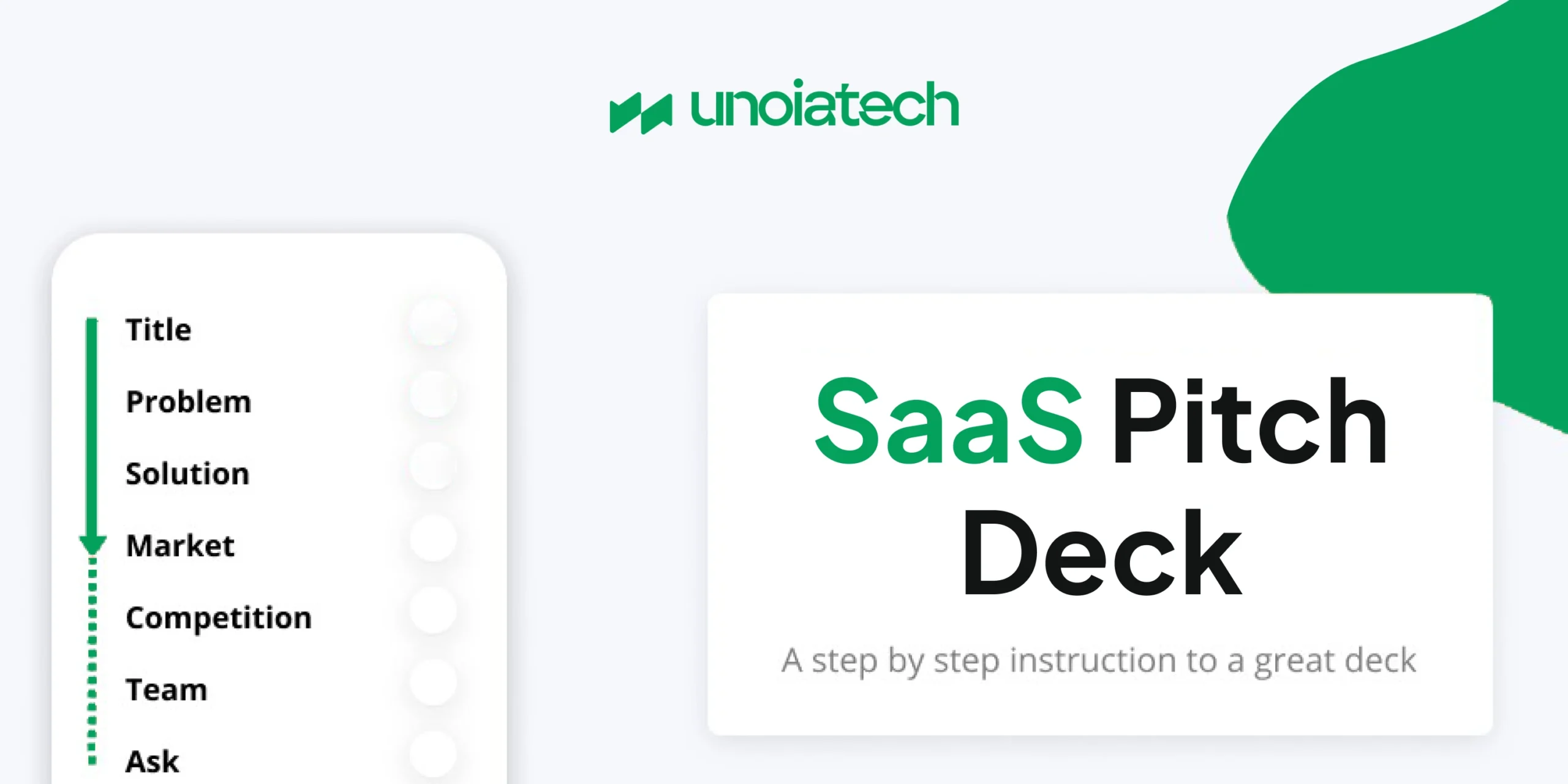
You’ve got your product. You’ve visualized the growth potential of your SaaS company. You have a stellar marketing plan. But without investors, you’re dead in the water.
There’s no need to panic, though. All you need is a SaaS pitch deck that will convince investors to bet on you. Whether you’re just getting started or in need of a refresh to shake things up, I’ve got you covered.
Stick with us, and you’ll learn everything you need to know about exactly what a SaaS pitch deck is, what information needs to be included, and how to set yours apart from the crowd. Any given investor is going to see dozens of these presentations, so yours needs to be special.
What Is a SaaS Pitch Deck?
A SaaS pitch deck is a tool used by entrepreneurs that covers everything an investor needs to know about your SaaS company. All of that data is finely packaged into a presentation that will convince an investor they should back your business plan. The idea is to prove that your product is worth financing and to do so with as little fuss as possible.
Picture a slideshow presentation that introduces a problem facing a given industry. Once the problem has been explained, a solution — your product — comes in, followed by research-backed data on the market, competition, and your financial plan, among other pertinent details.
It’s that simple: that’s a SaaS pitch deck. It’s a method of getting financing for your SaaS business. The tricky part is building a SaaS pitch deck that is so thorough and convincing that investors will be motivated to get behind your SaaS startup.
Without an excellent pitch deck, you’re going to find it difficult to get investors on board. They aren’t going to be interested in a speech about how great your company is without hard facts and projections to back that up.
Having all of the relevant data prepared and then displayed in a thoughtfully designed presentation is a great way to engage investors and get them to believe in your product as much as you do.
Key Elements of an Effective SaaS Pitch Deck
While there’s room for creativity in your SaaS pitch deck, certain core elements are essential. These components will address critical questions like who, what, when, where, why, and how. Whether your business focuses on content marketing or B2B SaaS e-commerce, these foundational elements must be included in your presentation.
The Introduction: Present Who You Are
Since you’re asking investors for a significant amount of capital, the last thing you want is to lose their interest. Your introduction slide should be engaging, straightforward, and concise.
It doesn’t need to be packed with details, but it should capture the audience’s attention and make them want to know more. Think of your introduction as the “cover” of your pitch—investors will form an immediate impression based on it.
Here’s what your introduction needs to answer:
- Who are you, and why should they care?
- What problem are you solving?
By addressing these key points, you’ll set the stage for the rest of your pitch, creating a clear and concise first impression without overwhelming your audience with too much information right off the bat.
The Problem: Highlight the Issue Your Product Solves
This section of your SaaS pitch deck should focus on why your product was created in the first place. You need to clearly explain what issue exists in the market and why it requires a solution.
Be sure to answer these questions:
- Who will benefit from your solution?
- What problem or pain point does your product address?
- Why is this problem significant?
- How widespread is the issue?
In this section, your goal is to clearly state the problem without diving into the solution yet. Keep it concise but compelling enough to ensure investors understand the gravity of the issue.
The Solution: Showcase How Your Product Fixes the Problem
Now it’s time to explain how your product provides a solution to the problem. In this section, focus on answering the following:
- How does your product resolve the issue?
- What sets your solution apart from competitors already tackling this problem?
- Why is your solution the best option for the market?
Your confidence in your product is clear, but this is the stage where you need to transfer that belief to potential investors. It’s not enough to simply demonstrate that your product works; you need to convince them that it offers a compelling opportunity for financial success.
The Market: Demonstrate How Data Supports Profitability
Now, it’s time to dive into the numbers, where you’ll start backing up your claims with data. The key here is not to overwhelm your audience with too much information. Instead, consider using a graph or presenting key statistics to make your points more digestible.
This part of your SaaS pitch deck should answer:
- What is the demand for your product? What is the total addressable market (TAM)?
- When can you expect to see meaningful results?
- Where is the biggest opportunity in the market?
Let the data speak for itself. If your research shows that the market is ripe for your product, there won’t be much convincing to do here. Focus on showcasing how the market conditions favor your success.
The Competition: Highlight What Sets You Apart
This is one of the most exciting sections of the pitch because it’s where you get to show off. While earlier parts of your SaaS pitch deck have focused on facts and data, this section gives you the chance to emphasize how your product stands out from the competition.
Here, you need to address:
- Who are your competitors, and who’s backing them? Who are their key clients?
- What differentiates your product from theirs? What makes your solution better?
- Why would customers choose your product over a competitor’s? Why should investors back you instead?
- How will you outperform the competition?
This is your opportunity to shine and demonstrate that you’ve done your homework. Investors want to know that you understand the competitive landscape and have a clear strategy to succeed.
The Product: Provide Detailed Insights into Your Offering
This is the heart of your SaaS pitch deck—the product itself. You’ve discussed the problem and solution, but now it’s time to give investors a deep understanding of what your product does and why it’s valuable.
You should cover:
- What does your product do, and what are its key features?
- Where can your product be most effectively implemented?
- How easy is it to use, and how does it make life easier for the user?
Use visuals like tables, graphs, or charts to simplify complex information. The goal is to make your product easy to understand, especially for those who may not be experts in your field.
The Financials: Break Down Your Revenue Model and Growth Plans
No pitch is complete without addressing the financials. This section is all about showing how you’ll make money and grow. Be clear and realistic when answering these questions:
- What is your pricing model, and how does it support profitability?
- When can investors expect growth, and what data backs up these projections?
- How will you optimize profits, and how do you plan to navigate potential market downturns?
In early funding rounds, most of your financials will be based on projections, market data, and competitor performance. As you progress, especially in later rounds, you’ll be able to present actual metrics like customer acquisition, churn rates, and revenue growth.
The Team: Introduce the Brains Behind the Operation
Investors don’t just invest in ideas—they invest in people. They want to know who’s behind the company and whether they can trust your team to execute the business plan. Here’s what to cover:
- Who are you, and who are the key members of your team?
- What relevant experience and qualifications do you and your team members bring to the table?
- When did your team start, and what’s your track record?
- Where have you previously worked, and what are your professional achievements?
- Why are you the right team to drive this company forward?
Investors need to be confident in the leadership behind the product. This section is your chance to show why you and your team are the best choice to execute the vision.
The Traction: Show the Progress You’ve Made
This is where you showcase your achievements and demonstrate that your company is on the right track. Investors want to see momentum, so provide hard data and tangible results. Focus on:
- What key milestones have you achieved so far?
- When did your company hit profitability, or when is it projected to?
- How are your monthly recurring revenue (MRR) and annual recurring revenue (ARR) performing?
This slide is all about building credibility. If you can show growth, successful customer acquisition, or key partnerships, investors will be more inclined to believe in your future potential.
The Funding Request: Clearly State Your Financial Needs
Investors need a clear picture of how much capital you’re seeking and how you plan to allocate those funds. This slide should outline your funding request in detail, addressing the following questions:
- What is the total amount you’re asking for?
- When do you expect to raise this funding?
- How will the money be allocated?
Be transparent and specific. Don’t hesitate to state exactly how much you need and provide a breakdown of where the funds will be spent—whether it’s on product development, marketing, or team expansion. Investors appreciate clarity, so be upfront and avoid beating around the bush.
What Investors Look for in a SaaS Pitch Deck
While there’s no one-size-fits-all approach, investors generally expect to see the key components we’ve covered. However, they might also look for additional details, such as:
- Customer satisfaction metrics
- Live product demos
- Sources for market research and projections
- Copies of financial statements
Ultimately, your SaaS pitch deck needs to be:
- Engaging, clear, and concise
- Supported by thorough research
- Transparent and honest
These elements will help build trust and credibility with potential investors.
Building Your SaaS Pitch Deck
Creating a successful SaaS pitch deck is a combination of storytelling and data presentation. You’ve likely crafted a PowerPoint before, so use those skills to build a compelling narrative. The challenge lies in presenting the right information in a clean and visually appealing way.
Keep in mind that your narrative is just as important as your data. If your story doesn’t flow, or if your data presentation is cluttered, you’ll lose your audience. Strive to present a deck that is informative yet simple, ensuring that investors can understand it even without your presentation.
Common Mistakes to Avoid in Your SaaS Pitch Deck
Now that you know what to include, let’s talk about what not to do in your SaaS pitch deck:
- Over-the-top animations: Avoid flashy transitions and unnecessary effects. Keep the design professional and let the content shine.
- Text-heavy slides: Don’t overwhelm investors with blocks of text. Use visuals to support your points and keep slides concise.
- Too many slides: Focus on quality over quantity. Make each slide count and don’t drown investors in unnecessary information.
- Unengaging narrative: Captivate your audience from the start. Avoid getting lost in the weeds of irrelevant details.
- Poor research: Ensure all your data is accurate and backed by solid research. Investors need proof, not just promises.
Successful SaaS Pitch Deck Examples
To better understand what makes a great pitch deck, let’s look at a few standout examples from successful companies.
1. Buffer

Buffer’s deck excels in its simplicity. By focusing on clean data and compelling stats, they avoid overwhelming the audience, while still presenting a strong case for their business.
- Industry: Marketing, Social Media, Analytics, and Productivity
- Customer Base: B2B
- Year Created: 2011
- Funding Round: Seed
- Amount Raised: $500,000
2. Dropbox
Dropbox’s pitch deck is a prime example of the “less is more” approach, hitting all the critical points while being clean and to the point.
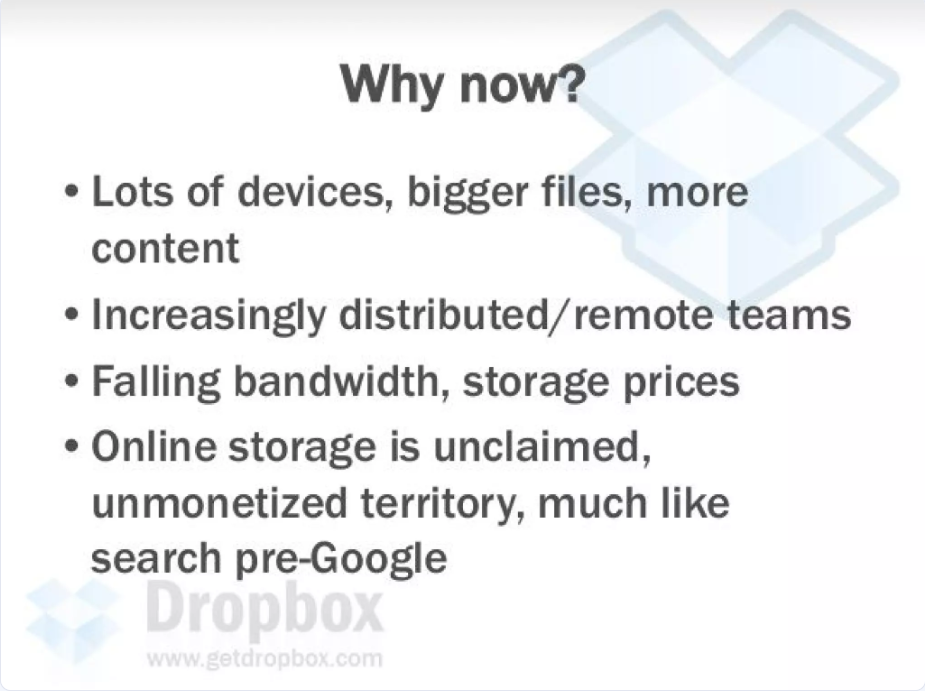
- Industry: Cloud and IT
- Customer Base: B2B and B2C
- Year Created: 2007
- Funding Round: Pre-Seed
- Amount Raised: $1,200,000
3. Mattermark
Mattermark’s deck stands out for its clarity, visually appealing design, and strong emphasis on data. It’s a great example of how to use visuals to make complex information more accessible.
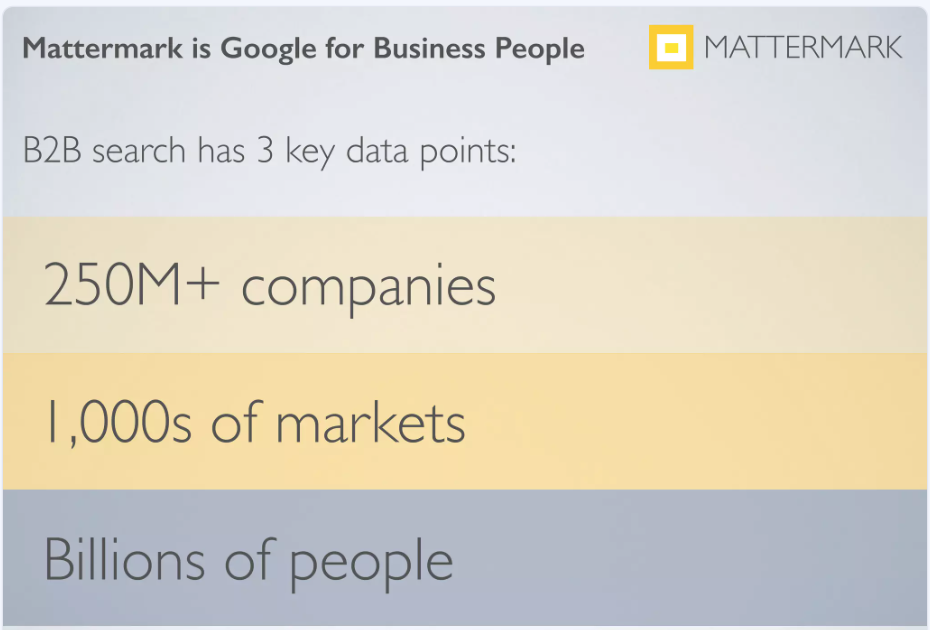
- Industry: Analytics, Machine Learning, Software, and IT
- Customer Base: B2B
- Year Created: 2014
- Funding Round: Series A
- Amount Raised: $6,500,000
Conclusion: Stand Out to Attract Investors
With over 15,500 SaaS companies worldwide, competition for funding is fierce. To secure investment, you need to craft a pitch deck that demonstrates your company’s potential for growth and profitability, while also standing out from the crowd.
By emulating the strategies used by successful companies like Buffer, Dropbox, and Mattermark, you can create a winning pitch deck that captures investors’ attention. These startups collectively raised millions by following proven principles, and so can you.
Ready to Build Your Own SaaS Success Story?
At Unoiatech, we specialize in helping businesses bring their SaaS vision to life. Whether you’re looking to scale, optimize, or launch from scratch, our team has the expertise to make it happen. Want to see how we helped one of our clients build a $900M SaaS product? Check out our case study here and discover how we can do the same for you.





